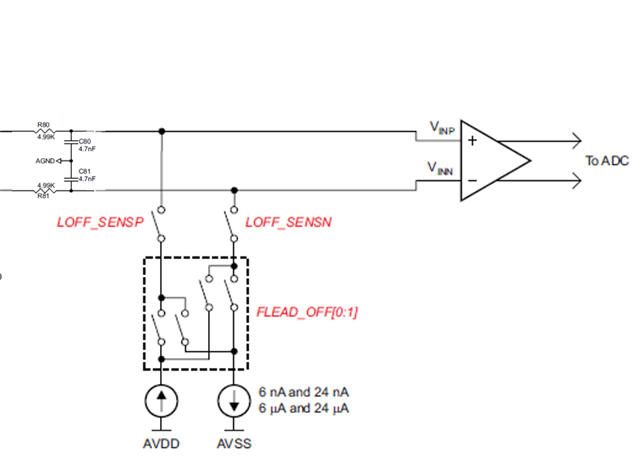Tool/software:
Hi
We are doing some testing & preparing the algorithms for the Lead-off detection functionality
There is an anomality in cases where NOTHING is connected to the system (open circuit)
Theoretically speaking - no circuit - no current flow, thus no signal.
In practice there is an effect of charging the anti-aliasing filter capacitors of 4.7nF to AGND at low frequencies.
We expect it to be manifested in the form of a triangular wave with amp of about 40mV for a 24nA current settings at 31.2Hz (constant current charging of cap).
Could you please detail your practical experience with this phenomenon and the way you recommend dealing with the case of open circuit detection?
Do these capacitors force their charged voltage over the external impedance (since they are connected directly to the PGA)?
Thanks,
Ilan





